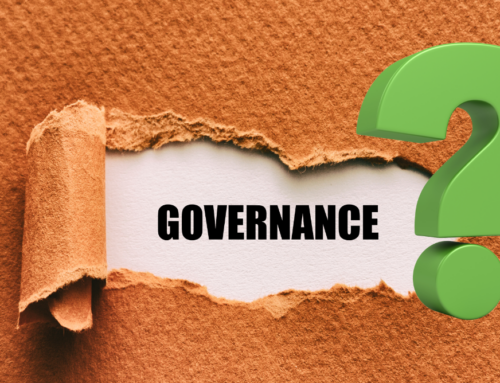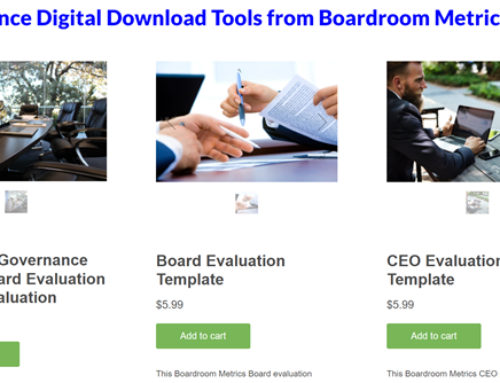Almost all Boards talk about their strategic plan. Board strategic planning is a top priority.
Here’s what almost every Board is missing about strategic planning (and their strategic plan): instead of treating strategic planning like the definition of everything the Board should be providing oversight on, most Boards treat strategic planning like it is ONE of the priorities the Board should be providing oversight on.
Some Background on Board Strategic Planning
The role of every governance Board is simple. It is to:
- Identify risks to the organization
- Validate and approve (in some cases, develop) a strategic plan for the organization
- Performance manages the CEO who is responsible FOR EXECUTING THE STRATEGIC PLAN approved by the Board
The purpose of Board strategic planning is also simple. It’s purpose is to:
- Mitigate risks that the Board has identified to the organization
- Define what priorities the organization will focus on to maximize execution of its mission
Everything a governance Board oversees is related to its strategic plan.
- The strategic plan prioritizes risks and identifies how those risks will be mitigated
- The strategic plan validates the mission of the organization and prioritizes the activities and investments for maximizing how the mission will be achieved
- The strategic plan defines the CEO’s goals and priorities for leading the organization and sets the standards for measuring CEO performance.
Everything the operational part of the organization (lead by the CEO) does is related to strategic plan.
Operational priorities are how strategies are executed. They are defined by the strategic plan. For example:
- every position/new hire in the organization is/should be related to either risk mitigation or mission execution goals
- every investment in the organization is/should be related to either risk mitigation or mission execution goals
- therefore, if the organization decides to implement new CRM system, the CRM system is necessary to execute a strategic priority (either risk mitigation or mission achievement). Or,
- if the organization decides to expand internationally, expansion is necessary to execute a strategic priority (mitigation or mission).
However, that is not how most Boards operate.
We observe Boards sitting through days of updates, education and decision making. We measure the links and the time Boards spend discussing risk, strategy development, strategy execution and CEO performance. Compared to everything else the Board discusses, time spent on strategy-related oversight HAS NEVER EXCEEDED 50%. In fact, the only reason it’s even close to 50% is if the Board is engaged in its strategic planning process.
Too Many Boards Treat the Strategic Plan Like a Checklist Item
Unfortunately, the majority of Boards treat their strategic plan like a separate priority from everything else they are doing. For example, Board meetings always include important updates – from the Chair, CEO, Committees, Leadership team, consultants, etc. Sometimes (in some cases consistently), there are also updates on the strategic plan. But these updates are seldom if ever linked, as in – ‘the reason this update on facilities is important is because it helps us achieve a priority defined in the strategic plan’.
It’s the same with important decisions. We’ve observed Boards making important, often expensive decisions on systems, hiring, services, consultants, expansion, contraction and just about everything else, WITHOUT EVER LINKING the decision back to strategy or the strategic plan, ie, ‘the reason we need a new financial system is to mitigate the tax accounting risk that was identified as a priority in the strategic plan’.
The Implications of De-Linking Strategy and Operations
When organizations are busy doing work that is not strongly linked to the strategic plan, the risk that they are working on something irrelevant is huge.
The Implications of De-Linking Strategy and Governance
When Boards are busy doing doing work that is not strongly linked to the strategic plan, the risk that they will miss an important risk, fail to mitigate an important risk, and/or fail to achieve the organization’s mission is huge. We believe it is one of the most common reasons that corporate governance fails.
Taking Action – Linking Governance to Board Strategic Planning
Here are the actions we recommend to help Boards link corporate governance to strategy.
- Review the role of the Board. Make sure everyone on the Board understands the purpose of strategy (risk mitigation, mission achievement) and the role of the Board in approving strategic direction and measuring execution of strategic priorities.
- Simplify the output of strategic planning. No Director has the time or inclination to absorb a five hundred page strategic plan. What Directors do need to internalize are the following:
- The mission of the organization (who the organization serves and how it serves them; note that many organizations are shockingly confused on this)
- The critical risks the organization is facing (updated every Board meeting)
- The strategic pillars of the organization (those five-seven things the organization does to execute its mission (eg, pricing, destinations and schedules are key airline pillars – these five to seven ‘pillars’ will only change over time slowly)
- The work required on each pillar to either mitigate risk or execute better (eg, better customer tracking; more social media visibility; expanded distribution – these get identified every couple of years)
- The work that will be done annually on each (this is the annual operating plan, eg, hire a new VP by X date; issue the RFP for new CRM system by X date; etc.)
- Adjust the agendas of Board meetings and the information the Board receives to:
- Focus regularly on updating risks
- Receive clear, precise updates on the achievement of the three-year strategic and annual operating priorities
- Measure the performance of the CEO versus the strategic and operating goals the Board has laid out
- Ensure that the presentation of every agenda item fits the strategic context “here’s why we’re talking about this; “here’s what was planned agreed”; “here’s what has been achieved so far”
- Eliminate the random discussion of topics not clearly related to the strategic plan
Summary
There are many important benefits that accrue to Boards that understand the close link between governance and strategy. Sustainability and success of the organization are the most important. However, Boards that remain strategy-driven also save time. They avoid the waste that is incurred debating random topics that have no strategic context. If we can help your Board get clear strategically, we promise that your Board will be more effective.








Leave A Comment